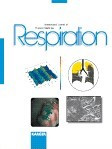Maxová H, Vasilková M, Novotná J, Vajnerová O, Banasová A, Vízek M, Herget J. Respiration. 2010 80(4):335–9. Epub 2010 Apr 10. IF: 1.935

Abstract:
BACKGROUND: Pulmonary vascular remodeling induced by chronic hypoxia regresses after return to normoxia. This regression is associated with an increased amount of collagenase in pulmonary mast cells and increased collagenolytic and elastolytic activity in the lung tissue. OBJECTIVE: The role of lung mast cells during recovery from chronic hypoxia was tested by the inhibition of their degranulation by disodium cromoglycate (DSCG). METHODS: Male Wistar rats (n = 46) were exposed to isobaric hypoxia (3 weeks, F(i)O2 0.1). Thirteen of them were tested immediately at the end of exposure, 17 were treated with DSCG during the first 4 days of recovery and tested on the 5th or 14th day of recovery, 16 untreated animals were measured at the same time intervals. These groups were compared with 12 animals kept in normoxia. The rats were anesthetized (Thiopental) and their pulmonary arterial blood pressure (PAP), cardiac output and heart weight were tested, as well as the collagen composition of the walls of the peripheral pulmonary arteries. RESULTS: DSCG applied during the first 4 days of recovery from chronic hypoxia blocked the decrease in PAP during the early phase of recovery and had no influence on PAP at a later phase. DSCG administration prevents collagen splitting in peripheral pulmonary vessels at the early phase of recovery. PAP and right ventricle hypertrophy were normalized after 14 days of return to normoxia. CONCLUSIONS: Mast cell degranulation plays a role in the regression of pulmonary hypertension during the early phase of recovery from chronic hypoxia.
-mk-
